Copag Baralho Espanhol
Copag Baralho Espanhol / Naipes Español.
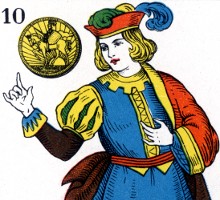
“Sevilha Tipo Espanhol” Spanish-suited cards from Brazil
COPAG's Spanish-suited deck, based on the Catalan pattern, was created around 1940 and is still in production. Some editions are called “Sevilha Tipo Espanhol,” others “Baralho Espanhol,” in both cases alluding to Spain rather than Portugal. Where once Brazil followed the Portuguese pattern of cards, in the 20th century the Spanish pattern was preferred, as shown here. An edition probably destined for Spanish-speaking markets such as Chile is called “Naipes Español Copihue.” Copag's Ace of Coins has a design with a central medallion showing a mounted knight in armour, with caduceus and cornucopia in the background on a small plinth.
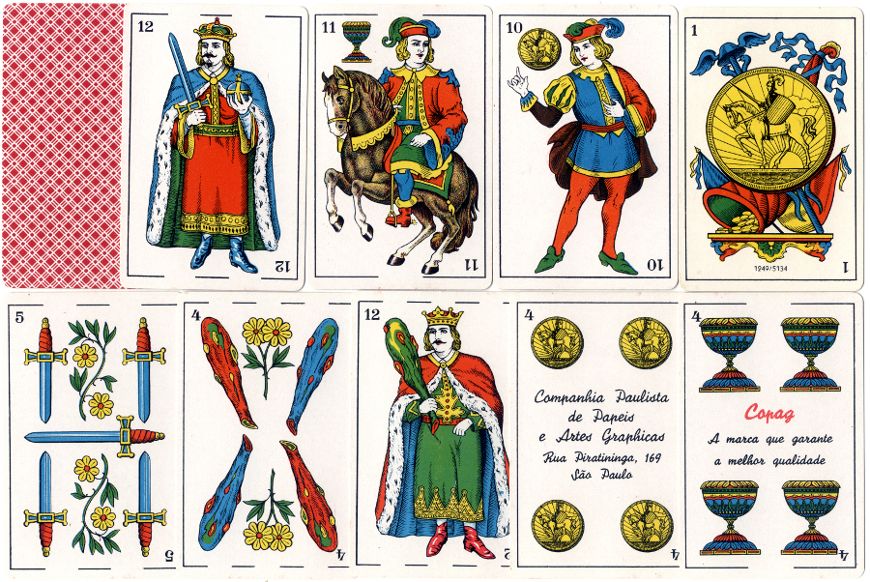
Above: 48-card “Sevilha Tipo Espanhol” Nº 169 Spanish-suited playing cards made by Cia Paulista de Papéis e Artes Gráficas, Rua Piratininga, São Paulo, Brazil, c.1960. The inscriptions on the cards are in Portuguese.
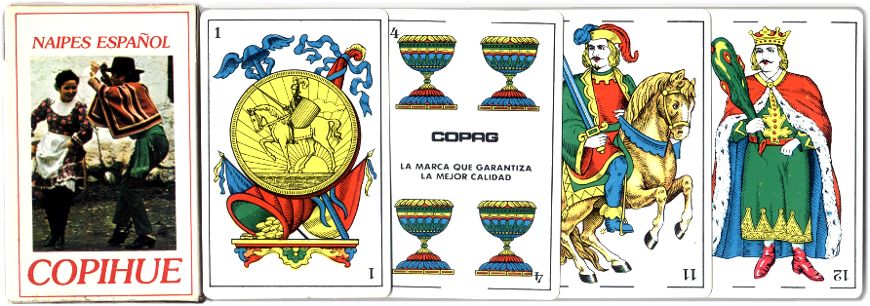
Above: box and four cards from “Naipes Español Copihue” 40-card Spanish-suited deck with a colour photograph of Chilean Huasos dancing on the box, probably for the Chilean market made by Cia Paulista de Papéis e Artes Gráficas, Rua Piratininga 169, São Paulo. All the inscriptions are in Spanish and the Copihue is the national flower of Chile. (Click to zoom).
In 1987 COPAG’s plant was moved to Manaus, in the Amazon region, a tax-free industrial district.
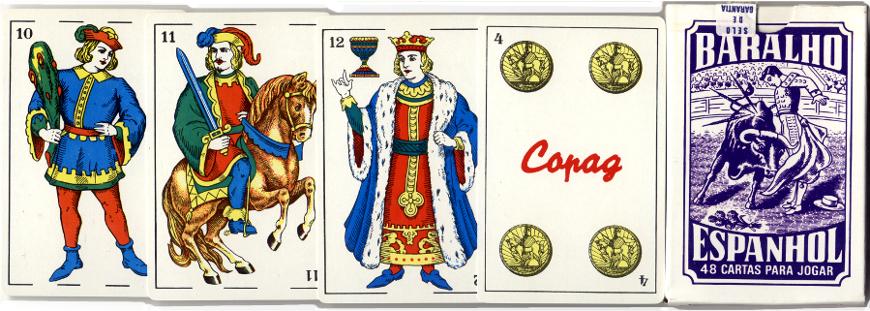
Above: 48-card “Baralho Espanhol” Spanish-suited playing cards with bullfight scene on the box made by Copag de Amazônia S/A, Av. Solimöes, nº 2200, Manaus, Brazil, 1990.

By Simon Wintle
Member since February 01, 1996
Founder and editor of the World of Playing Cards since 1996. He is a former committee member of the IPCS and was graphics editor of The Playing-Card journal for many years. He has lived at various times in Chile, England and Wales and is currently living in Extremadura, Spain. Simon's first limited edition pack of playing cards was a replica of a seventeenth century traditional English pack, which he produced from woodblocks and stencils.
Trending Articles
Popular articles from the past 28 days
Related Articles
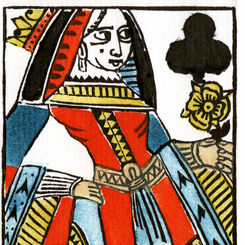
Woodblock and Stencil Queen of Clubs
A limited edition art print of the Queen of Clubs 1984 woodblock joker.
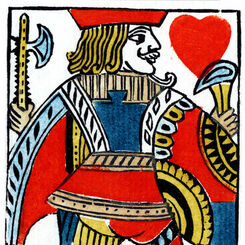
Woodblock and Stencil Jack of Hearts
A limited edition art print of the Jack of Hearts 1984 woodblock joker.
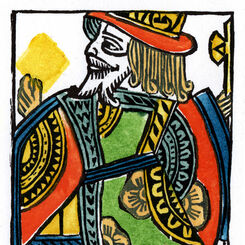
Woodblock and Stencil King of Diamonds
A limited edition art print of the King of Diamonds 1984 woodblock joker.
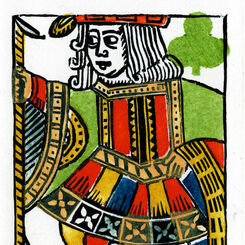
Woodblock and Stencil Jack of Clubs
A limited edition art print of the Jack of Clubs 1984 woodblock joker.
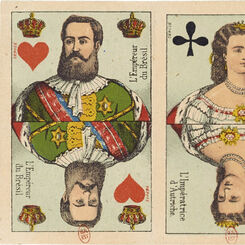
Jeu Quatre Empereurs
Brazilian scenic aces with emperors of Brazil, Austria and France and other dignitaries on the court...
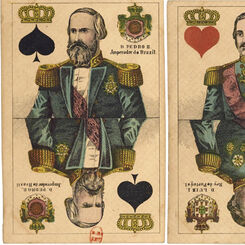
Kings and Queens of Brazil & Portugal
Historical playing cards by C. L. Wüst depicting monarchs of Brazil and Portugal.
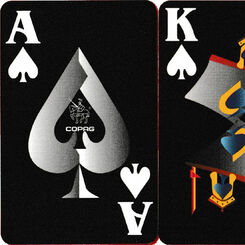
EPOC playing cards
Modern designs by Brazilian artist Maria Leonor Décourt inspired by standard English pattern courts....
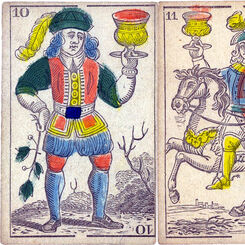
Spanish-suited deck by J.Y. Humphreys
A rare Spanish-suited deck published by J.Y. Humphreys, Philadelphia, c.1816.
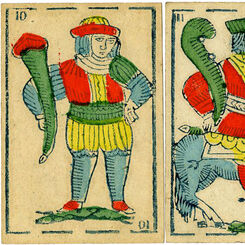
P. Buscaglia: Spanish-suited cards
Spanish-suited cards published by P. Buscaglia, Mele & Genova.
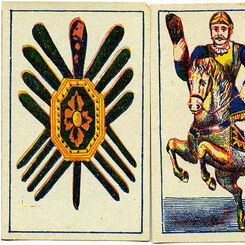
Portuguese cards for Brazil
Portuguese-type cards made in or for Brazil, c.1890.
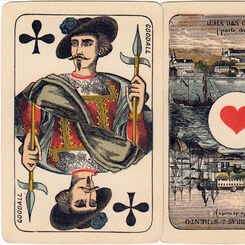
Goodall’s Wüst house pattern playing cards
Goodall’s Wüst house pattern playing cards with scenic aces of Brazil.
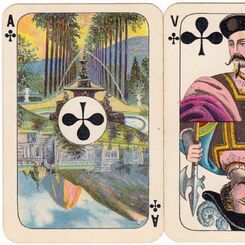
Unnamed Scenic aces of Rio de Janeiro
Cards made by C.L.Wüst of Germany for Brazil
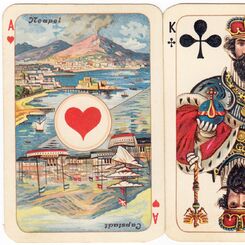
Wüst playing cards with International scenic aces
A rarely seen pack of cards
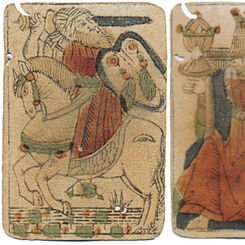
XV Century Spanish-suited playing cards
XV Century Spanish-suited playing cards with moorish influences
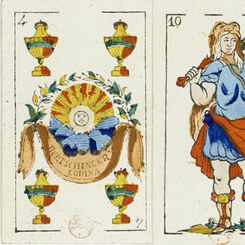
Bertschinger y Codina
Fantasy Spanish-suited playing cards by Bertschinger y Codina (Barcelona), c.1850.
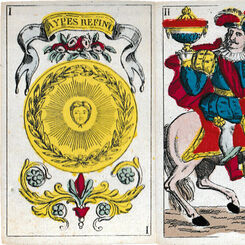
Alphonse Arnoult Spanish-suited pack
Luxurious Spanish-suited pack made by Alphonse Arnoult, Paris, France, c.1850.
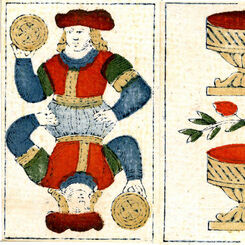
Clemente Roxas double-ended Spanish pack
Double-ended Spanish-suited playing cards published by Clemente de Roxas in Madrid, 1814.
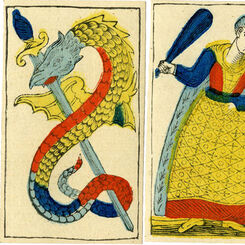
Cartas Portuguezas
Portuguese pattern playing cards published in Rio de Janeiro, Brazil, late 19th century.
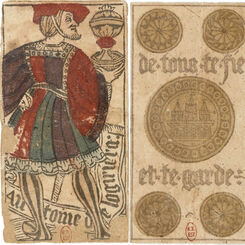
Antoine de Logiriera
Archaic Spanish-suited playing cards published in Toulouse by Antoine de Logiriera (1495-1518).
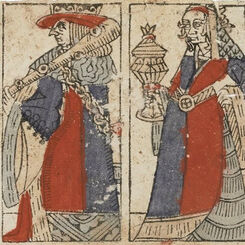
J. Deluy c.1490s
Archaic Spanish-suited cards produced by J. Deluy c.1490s.
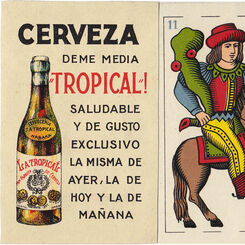
Wüst Spanish pattern
Wüst Spanish pattern c.1910 advertising Cuban ‘Tropical’ beer.
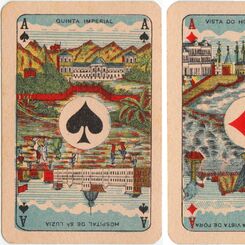
Brazil Pictorial Aces
Genoese pattern with Pictorial Aces for Brazil by Brepols, Turnhout, c.1920.
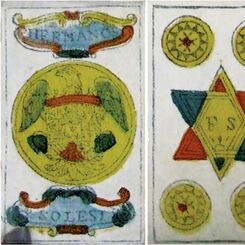
Hermanos Solesio
“Money Bag” pattern by Hermanos Solesi, late 18th c.
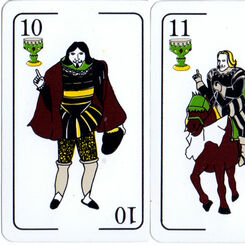
Kem ‘Spanish’ playing cards
Kem ‘Spanish’ playing cards appear to depict Spanish conquistadors © 1994.
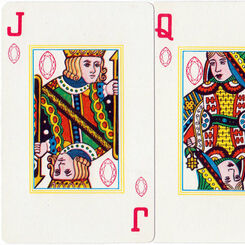
4C Gemstone playing cards for De Beers
4C Gemstone playing cards for De Beers, 1988.
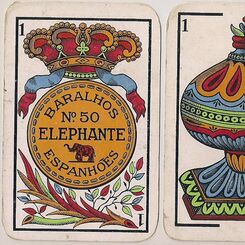
Elephante No.50
‘Elephante No.50’ Cadiz pattern produced in Brazil, probably by Azevedo & Cia, Recife, c.1920.
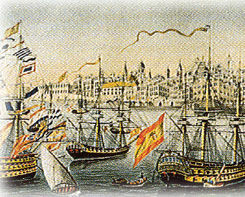
Cádiz Pattern playing cards
Cádiz Pattern playing cards
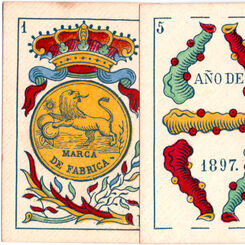
Naipes ‘El Leon’ 1897
Naipes ‘El Leon’ manufactured by Federico Hidalgo (Barcelona, 1897-1899).
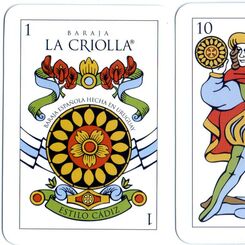
Naipes ‘La Criolla’ by Anabella Corsi
Inspired by an archaic Spanish pattern formerly used in Spain during the 16th and 17th centuries.
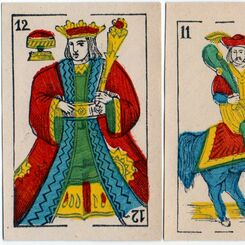
Anon Spanish Cards c.1875
Spanish-suited playing cards made in Belgium by Mesmaekers Frères, c.1875.
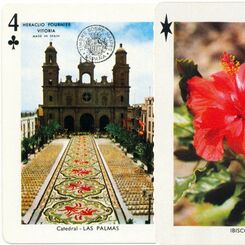
Canary Islands Souvenir
Canary Islands Souvenir by Heraclio Fournier, c.1970.
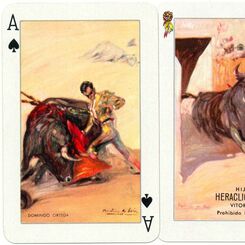
Martínez de León
Bull-fighters pack published by Hijos de Heraclio Fournier, Vitoria (Spain) with artwork by Andrés M...
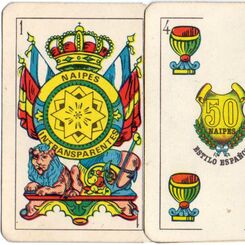
Naipes Españoles “El Mexicano”
Standard Catalan-type deck, titled "El Mexicano", by an anonymous Argentinean manufacturer, c.1980s....
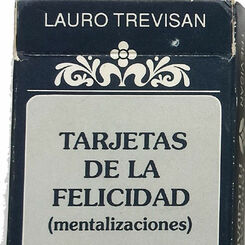
Tarjetas de la Felicidad
“Tarjetas de la Felicidad” containing positive mental affirmations by Lauro Trevisan, Buenos Aires (...
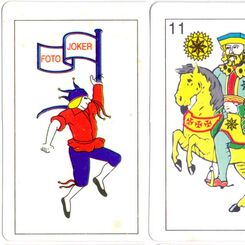
Foto Joker
'Foto Joker' Spanish playing cards for Matera Color Laboratory, 2008.
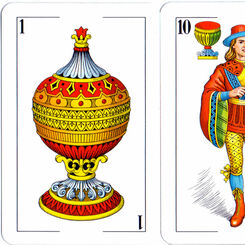
El Jokey by Piatnik, 1990s
‘El Jokey’ Spanish-suited pack by Piatnik & Sons, Vienna, 1990s
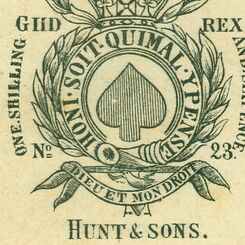
40: More on Design Copies and Fakes
The issue of design copies needs further consideration and when does a copy become a fake?

Philishave
Spanish-suited advertising deck for Philishave electric razors.
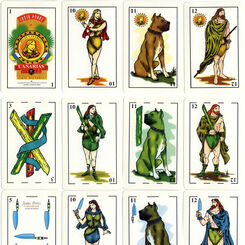
Baraja Canaria
‘La Auténtica Baraja Canaria’ was published in 1995 by Justo Pérez as an expression of the history a...
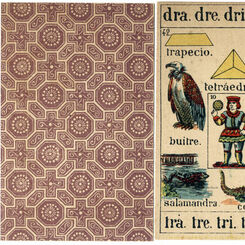
Jaime Margarit - Recreo Infantil
'Recreo Infantil' children's educational cards published by Jaime Margarit, Palamós (Gerona) c.1888....

Benoist Laius
Spanish playing cards such as these were used in those parts of France where certain games were enjo...
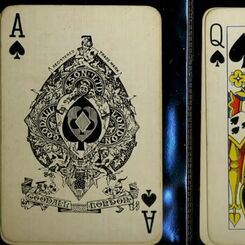
8: Standard English Cards in Latin America: Argentina, Brazil and Chile
A brief survey of the designs of English cards in South America.

Baraja Edad Media
Baraja Edad Media, fantasy Spanish-suited medieval playing cards published Mas-Reynals, Barcelona, 1...

La Española Classic
‘La Española Classic’ is a traditional ‘La Española’ Spanish-suited pack and is produced in several ...


